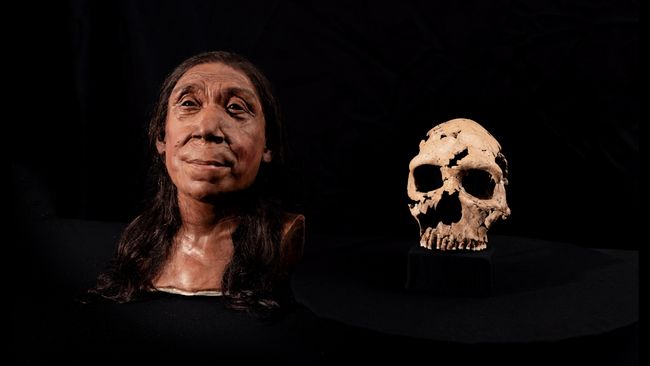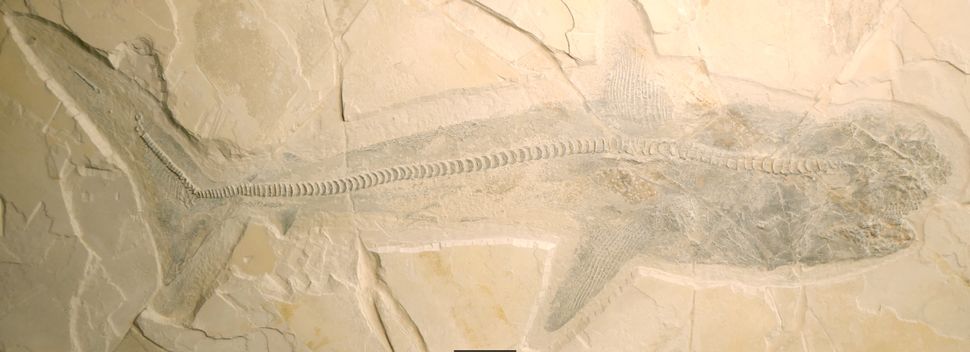Bayard
Bayard's JournalCat-Shaming Moments
Why should dogs have all the fun?













More at:
https://www.simplyurbans.com/trending/cat-shaming/?utm_source=taboola
Neanderthal woman's face brought to life in stunning reconstruction
With her long, brown hair and determined gaze, the new facial reconstruction lets us peek into the world of an archaic human who lived tens of thousands of years ago.

The recreated head of "Shanidar Z'' shows a Neanderthal woman who lived about 75,000 years ago. (Image credit: University of Cambridge; BBC Studios/Jamie Simonds)
A Neanderthal skull that was crushed to bits 75,000 years ago has been pieced back together and used to recreate the face of a wise-looking archaic woman with dark, flowing hair.
Archaeologists painstakingly pieced together the skull of the individual, who researchers have named Shanidar Z, from hundreds of flattened bone fragments discovered inside Shanidar Cave in Iraqi Kurdistan in 2018. Her skull is believed to have been crushed shortly after her death, possibly by rockfall, and then compacted by tens of thousands of years of sediment.
And now, with the help of surface scans and 3D-printing techniques, archaeologists have brought her synthetic face to life — muscle, skin and all. They detailed their efforts in a new documentary titled "Secrets of the Neanderthals," which launched on Netflix May 2.
"The skulls of Neanderthals and humans look very different," Emma Pomeroy, a paleoanthropologist at the University of Cambridge who's featured in the documentary, said in a statement.
https://www.livescience.com/archaeology/neanderthal-womans-face-brought-to-life-in-stunning-reconstruction?utm_term=55C996C6-4393-4B13-9736-9BEC0BC6AFA6&lrh=990ccd8e582dc48a5de81889b47c5d726c369528246fb5cf774b4c820833a528&utm_campaign=368B3745-DDE0-4A69-A2E8-62503D85375D&utm_medium=email&utm_content=F3DF1F93-C9DA-4D86-A379-AF4EF3CCCE41&utm_source=SmartBrief
They estimate she was about 45 years old. That would have been a very old woman back then.
Orangutan seen treating wound with medicinal herb in first for wild animals
Sumatran ape applied sap and leaves to open cut after suspected fight with another male, say scientists
The high intelligence levels of orangutans have long been recognised, partly due to their practical skills such as using tools to retrieve seeds and forage for insects. But new research suggests the primate has another handy skill in its repertoire: applying medicinal herbs.
Researchers say they have observed a male Sumatran orangutan treating an open facial wound with sap and chewed leaves from a plant known to have anti-inflammatory and pain-relieving properties.
It is not the first time wild animals have been spotted self-medicating: among other examples, Bornean orangutans have been seen rubbing their arms and legs with chewed leaves from a plant used by humans to treat sore muscles, while chimpanzees have been recorded chewing plants known to treat worm infections and applying insects to wounds.
However, the new discovery is the first time a wild animal has been observed treating open wounds with a substance known to have medicinal properties.
“In the chimpanzee case they used insects and unfortunately it was never found out whether these insects really promote wound healing. Whereas in our case, the orangutan used the plant, and this plant has known medical properties,” said Dr Caroline Schuppli, senior author of the research based at Max Planck Institute of Animal Behavior in Germany.
The team say the findings offer insight into the origins of human wound care – the treatment of which was first mentioned in a medical manuscript dating to 2200BC.
https://www.theguardian.com/science/article/2024/may/02/orangutan-seen-treating-wound-with-medicinal-herb-in-first-for-wild-animals-max-planck-institute-sumatra
TX farmers: "company sold them PFAS contaminated sludge that killed livestock
A Texas county has launched a first-of-its-kind criminal investigation into the waste management giant Synagro over PFAS-contaminated sewage sludge it is selling to Texas farmers as a cheap alternative to fertilizer.
Two small Texas ranches at the center of that case have also filed a federal lawsuit against Synagro, alleging the company knew its sludge was contaminated but still sold it. Sludge spread on a nearby field sickened the farmers, killed livestock, polluted drinking water, contaminated beef later sold to the public and left their properties worthless, the complaint alleges.
The PFAS levels independent testing found on the farm were “shockingly high”, said Kyla Bennett, policy director for the Public Employees for Environmental Responsibility (Peer) non-profit, which is assisting in the analyses.
The farms’ drinking water was found to be contaminated at levels over 13,000 times higher than the federal health advisory for PFOS, one kind of PFAS compound, a Guardian calculation indicates, and affected meat was as much as 250,000 times above safe levels, the lawsuit alleges.
The complaint alleges the families will probably have to abandon their ranches from which they sell livestock.
“It’s devastating and terrifying,” said Mary Whittle, an attorney representing the farmers. “They have developed these properties to be the center of their world … and this is how they make their money.”
PFAS are a class of about 15,000 compounds that are dubbed “forever chemicals” because they don’t naturally break down, and accumulate in the human body and environment. The chemicals are linked to a range of serious health problems like cancer, liver disease, kidney issues, high cholesterol, birth defects and decreased immunity.
https://www.theguardian.com/environment/2024/mar/01/texas-farmers-pfas-killed-livestock
Hilariously Wholesome Dog Ratings To Brighten Up Your Day













More at:
https://www.boredpanda.com/rate-cute-dogs/?utm_source=pinterest15&utm_medium=social&utm_campaign=jamal
I can't seem to stop looking at all these pics
Its way past my bedtime--somebody please take over!
![]()



















Many many more:
https://acidcow.com/fun/
Are ghosts real?
One difficulty in scientifically evaluating is ghost are real is the surprisingly wide variety of phenomena attributed to ghosts.
If you believe in ghosts, you're not alone. Cultures all around the world believe in spirits that survive death to live in another realm. In fact, ghosts are among the most widely believed of paranormal phenomenon: Millions of people are interested in ghosts. It's more than mere entertainment; A 2019 Ipsos poll found that 46% of Americans say they truly believe in ghosts. (The nation is discerning in its undead beliefs; only 7% of respondents said they believe in vampires).
And about 18% of people say they have either seen a ghost or been in one's presence, according to a 2015 Pew Research study. Why do so many claim to have such brushes with the afterlife?
"One common cause may be pareidolia, the tendency for our brains to find patterns (especially human faces and figures) amongst ambiguous stimuli," Stephen Hupp, clinical psychologist and professor at Southern Illinois University Edwardsville, Told Live Science in an email. "One common example is when we see faces or figures in the clouds and another is when random shapes and shadows in a dark house look like a ghost," said Hupp, who is also the editor of Skeptical Inquirer magazine.
But the idea that the dead remain with us in spirit is an ancient one, appearing in countless stories, from the Bible to "Macbeth." It even spawned a folklore genre: ghost stories. Belief in ghosts is part of a larger web of related paranormal beliefs, including near-death experience, life after death, and spirit communication. The belief offers many people comfort — who doesn't want to believe that our beloved but deceased family members aren't looking out for us, or with us in our times of need?
People have tried to (or claimed to) communicate with spirits for ages; in Victorian England, for example, it was fashionable for upper-crust ladies to hold séances in their parlors after tea and crumpets with friends. Ghost clubs dedicated to searching for ghostly evidence formed at prestigious universities, including Cambridge and Oxford, and in 1882 the most prominent organization, the Society for Psychical Research, was established. A woman named Eleanor Sidgwick was an investigator (and later president) of that group, and could be considered the original female ghostbuster. In America during the late 1800s, many psychic mediums claimed to speak to the dead — but were later exposed as frauds by skeptical investigators such as Harry Houdini.
Stephen Hupp, PhD
Editor of Skeptical Inquirer Magazine
Stephen Hupp is the editor of "Skeptical Inquirer" magazine. He is also a clinical psychologist and a professor of psychology at Southern Illinois University Edwardsville (SIUE). He has published several books including "Pseudoscience in Therapy" (Cambridge University Press, 2023) and "Investigating Pop Psychology" (Routledge, 2022).
https://www.livescience.com/26697-are-ghosts-real.html
I kind of like Albert Einstein's suggestion of a scientific basis for the reality of ghosts, based on the First Law of Thermodynamics: If energy cannot be created or destroyed but only change form, what happens to our body's energy when we die? Could that somehow be manifested as a ghost? Makes sense to me. BUT, the article debunks that one too.
China green-lights mass production of autonomous flying taxis
The EHang EH216-S autonomous flying taxi is the first eVTOL ready for mass production and could lead the way for flying cars around the world.

EHang's EH216-S "passenger-carrying pilotless" eVTOL has received clearance to be mass-produced. (Image credit: EHang)
Autonomous flying taxis could soon be a reality after vehicle manufacturer EHang obtained the world’s first production certificate to manufacture them in China.
EHang's EH216-S "passenger-carrying pilotless" electric vertical takeoff and landing (eVTOL) vehicle received clearance to be mass-produced from the Civil Aviation Administration of China (CAAC), company representatives announced in a statement on April 7.
Many companies manufacture eVTOLs, but they have so far only been developed as prototypes for test flights. This decision represents a notable step towards introducing eVTOLs commercially.
"Our vision is to introduce safe and reliable pilotless eVTOL aircraft to the global market, thereby offering safe, autonomous and eco-friendly air mobility services to everyone," Huazhi Hu, CEO of EHang, said in the statement. The production certificate gives EHang the go-ahead to manufacture flying cars, encompassing the sourcing of raw materials, supply chain management, quality control and testing, in addition to after-sales repair and maintenance — all verified by comprehensive reviews and inspections.

(Image credit: EHang)
https://www.livescience.com/technology/electric-vehicles/china-green-lights-mass-production-of-autonomous-flying-taxis-with-commercial-flights-set-for-2025?utm_term=55C996C6-4393-4B13-9736-9BEC0BC6AFA6&lrh=990ccd8e582dc48a5de81889b47c5d726c369528246fb5cf774b4c820833a528&utm_campaign=368B3745-DDE0-4A69-A2E8-62503D85375D&utm_medium=email&utm_content=3BB35137-E0BA-4223-8FC6-A0028425313F&utm_source=SmartBrief
For some reason, this reminds me of the Will Smith movie, "I, Robot."
Ancient, 30-foot relative of great white shark unearthed in Mexico quarry
"Exceptionally preserved" fossils of an ancient shark that lived alongside the dinosaurs has finally revealed what the predator looked like — and why it may have gone extinct.
Complete fossils from an enormous shark that lived alongside the dinosaurs reveal crucial information about this enigmatic predator — including it being an ancient relative of the great white shark.
The sharks, from the genus Ptychodus, were first discovered in the mid-eighteenth century. Descriptions of this genus were largely based on their teeth — which could be nearly 22 inches (55 centimeters) long and 18 inches (45 cm) wide, and were adapted for crushing shells — found in numerous marine deposits dating to the Cretaceous period (145 million to 66 million years ago).
Without the ability to examine a fully intact specimen, researchers had hotly debated what the shark's body shape might look like — until now. "The discovery of complete Ptychodus specimens is really exciting because it solves one of the most striking enigmas in vertebrate paleontology," lead author Romain Vullo, a researcher at Géosciences Rennes, told Live Science in an email.
In a study published Wednesday (April 24) in the journal Proceedings of the Royal Society B: Biological Sciences, researchers have described complete fossils of the shark discovered in limestone quarries in Nuevo León, northeastern Mexico. Its outline was still fully preserved, and its body shape suggests it hunted sea turtles — which could explain its extinction around 76 million years ago as it was competing with other animals that ate the same prey.

The "exceptionally preserved" fossil unearthed in a limestone quarry in northeastern Mexico. (Image credit: Vullo et al/Proceedings B)
https://www.livescience.com/animals/sharks/ancient-30-foot-ancestor-of-great-white-shark-unearthed-in-mexico-quarry?utm_term=55C996C6-4393-4B13-9736-9BEC0BC6AFA6&lrh=990ccd8e582dc48a5de81889b47c5d726c369528246fb5cf774b4c820833a528&utm_campaign=368B3745-DDE0-4A69-A2E8-62503D85375D&utm_medium=email&utm_content=30533522-7AA1-48EA-9937-14374834AD2F&utm_source=SmartBrief
An extra moon may be orbiting Earth
An extra moon may be orbiting Earth — and scientists think they know exactly where it came from
The near-Earth asteroid Kamo'oalewa, which orbits alongside our planet as a 'minimoon,' may have originated from Giordano Bruno crater on the far side of the moon, new research suggests.
A fast-spinning asteroid that orbits in time with Earth may be a wayward chunk of the moon. Now, scientists think they know exactly which lunar crater it came from.
A new study, published April 19 in the journal Nature Astronomy, finds that the near-Earth asteroid 469219 Kamo'oalewa may have been flung into space when a mile-wide (1.6 kilometers) space rock hit the moon, creating the Giordano Bruno crater.
Kamo'oalewa's light reflectance matches that of weathered lunar rock, and its size, age and spin all match up with the 13.6-mile-wide (22 km) crater, which sits on the far side of the moon, the study researchers reported.
China plans to launch a sample-return mission to the asteroid in 2025. Called Tianwen-2, the mission will return pieces of Kamo'oalewa about 2.5 years later, according to Live Science's sister site Space.com.
"The possibility of a lunar-derived origin adds unexpected intrigue to the [Tianwen-2] mission and presents additional technical challenges for the sample return," Bin Cheng, a planetary scientist at Tsinghua University and a co-author of the new study, told Science.

Giordano Bruno crater (the white, rayed crater on the right) may be the source of the peculiar near-Earth asteroid 469219 Kamo'oalewa. (Image credit: NASA)
https://www.livescience.com/space/asteroids/strange-minimoon-orbiting-alongside-earth-may-be-a-piece-of-the-far-side-of-the-moon-new-research-hints?utm_term=55C996C6-4393-4B13-9736-9BEC0BC6AFA6&lrh=990ccd8e582dc48a5de81889b47c5d726c369528246fb5cf774b4c820833a528&utm_campaign=368B3745-DDE0-4A69-A2E8-62503D85375D&utm_medium=email&utm_content=30533522-7AA1-48EA-9937-14374834AD2F&utm_source=SmartBrief
Profile Information
Gender: Do not displayHome country: U.S.
Member since: Tue Dec 29, 2015, 03:16 PM
Number of posts: 22,168